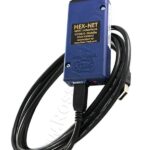Having trouble getting a response from your car’s controller using VCDS? This is a common issue, especially with third-party interfaces. This guide will walk you through common causes and solutions to get your VCDS communicating.
Common Causes of “No Response from Controller”
The dreaded “No Response from Controller” message in VCDS can stem from several issues:
- Faulty or Incompatible Interface: Third-party interfaces often lack the necessary drivers or quality components for reliable communication. A genuine Ross-Tech interface is recommended.
- Driver Issues: Incorrect or outdated drivers can prevent the interface from communicating with your vehicle’s control modules. Always ensure you have the latest drivers from the manufacturer, specifically designed for your operating system.
- Connection Problems: Loose connections at the OBD-II port or damaged wiring can interrupt communication.
- Incorrect COM Port Selection: VCDS needs to be configured to use the correct COM port assigned to your interface. Check your Device Manager to confirm the correct port.
- Latency Issues: High latency on your computer, often caused by background processes, can disrupt the timing-sensitive communication between VCDS and the controller.
- Vehicle Compatibility: Ensure your vehicle and control module are compatible with the version of VCDS you are using. Consult the Ross-Tech website for compatibility charts.
- Low Battery Voltage: A low car battery can cause communication errors.
Troubleshooting Steps for VCDS Communication
Follow these steps to resolve the “No Response from Controller” issue:
- Verify Interface Connection: Check for a secure connection at both the OBD-II port and the interface connection to your computer.
- Test with a Different OBD-II Tool: Using a simple OBD-II code reader to successfully connect with your vehicle confirms the OBD-II port itself is functional.
- Update or Reinstall Drivers: Download the latest drivers for your specific interface from the manufacturer’s website. Uninstall existing drivers before installing the new ones.
- Select the Correct COM Port: In VCDS, go to Options -> Select COM Port and choose the port assigned to your interface.
- Reduce Latency: Close unnecessary applications running in the background to minimize latency. Disable antivirus and firewall software temporarily as they can sometimes interfere.
- Check Battery Voltage: Ensure your car battery has sufficient voltage. A low battery can lead to communication problems. Charge or replace the battery if necessary.
- Consult Ross-Tech’s Resources: The Ross-Tech website offers extensive documentation, FAQs, and forums that can provide specific solutions for your vehicle and interface.
Using VCDS for Immobilizer Issues
VCDS can provide more detailed information about immobilizer problems than a generic code reader. While it may not directly disable the immobilizer, it can pinpoint the fault, such as an incorrect key, faulty receiver, or other related components, by providing specific fault codes and data. This information can guide further diagnosis and repair.
Consider a Genuine Ross-Tech Interface
While troubleshooting steps can sometimes resolve issues with third-party interfaces, a genuine Ross-Tech interface is highly recommended for reliable and consistent performance. They are designed specifically for VCDS and offer guaranteed compatibility and support. Investing in a genuine cable often prevents future frustration and ensures accurate diagnostics.

